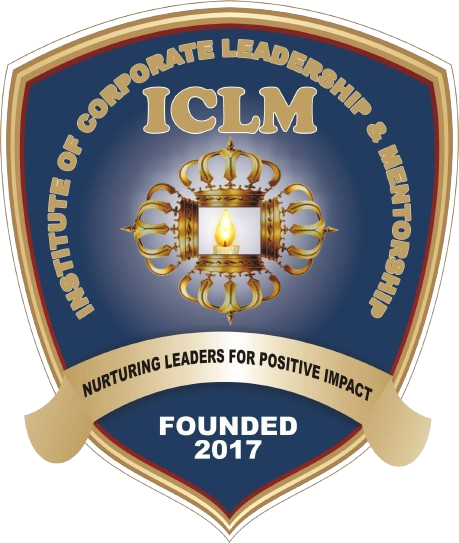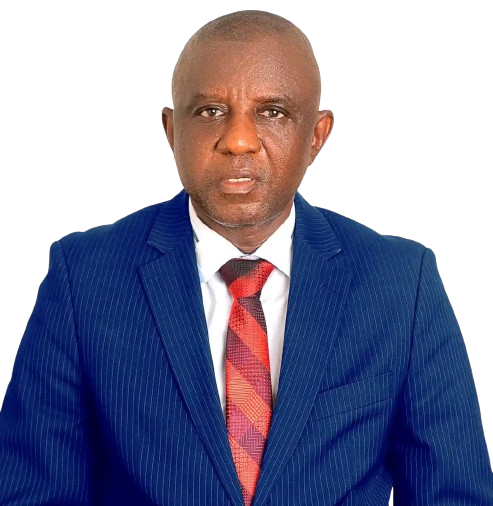By Apostle Emmanuel Eduongo, FCLMI
INTRODUCTION
Leadership is not just about the title or maintaining the status quo; it’s about driving change, innovation, and progress. Effective leaders recognize the need for transformation and take bold steps to shape the future.
A change agent is a person who encourages and enables change to occur in a group or organisation. They help to transform the way an organisation works to make it more productive. Learning how to be a change agent as a leader can enable you to create a positive impact in your workplace.
Change agents facilitate systemic transformation through a unique set of skills, mindset, and adaptability, enabling them to navigate and thrive in the face of uncertainty and constant change. They are not only disruptors, they are also connectors, bridging gaps and connecting the dots across disciplines, cultures, and generations to create new opportunities and solutions.
In this lecture, we are going to discuss how a leader can be a change agent, by navigating the entire objectives of the lecture to inculcate in our participants/inductees a sense of responsiveness towards effective and efficient discharge of their leadership functions.
LEADERSHIP AND CHANGE MANAGEMENT
John Maxwell in his book, ‘The 21 Irrefutable Laws of Leadership’ saysleadership is the process of influencing, motivating, and inspiring individuals or teams to achieve a shared vision, goal, or objective. The various types of leadership are: Transformational Leadership, Transactional Leadership, Servant Leadership, Situational Leadership or Adaptive Leadership. In all, effective leaders:
- Set direction and strategy
- Build trust and credibility
- Communicate effectively
- Empower and develop others
- Make informed decisions
- Foster innovation and creativity
On the other hand, change management, as postulated by Daryl Conner in his book, ‘Managing at the Speed of Change’ is the systematic approach to transitioning individuals, teams, and organizations from a current state to a desired future state. Effective change management uses the following strategies:
- Aligns with organizational strategy
- Engages stakeholders and communicates change
- Assesses and mitigates risks
- Develops and implements change plans
- Monitors progress and evaluates impact
WHY IS IT IMPORTANT FOR A LEADER TO BE A CHANGE AGENT?
It’s essential for leaders to handle changes within organisations effectively to retain the trust of team members and increase growth. Leaders play an important role in ensuring that changes introduced and implemented by the management are well-received and make a positive impact on employees of every level and rank within the company. They’re proactive and productive, being able to communicate the reasons and effects of the changes to team members in a clear and concise way.
Strong leaders require this important trait of ensuring that the company is ready for changes and transformation. They set an example for those who work under them by adapting and excelling in their new roles and responsibilities. By doing so, they encourage their team members to readily accept the changes that they face as well. This may ease any reluctance to change and help to improve the morale of the staff.
CHARACTERISTICS OF LEADERS WHO ARE AGENT OF CHANGE
- Visionary thinking: Leaders have a clear understanding of the organization’s purpose, goals, and future direction.
- Strategic mindset: Leaders recognize the need for change to stay competitive and relevant.
- Influence and authority: Leaders have the power to mobilize resources, motivate stakeholders, and drive change initiatives.
- Innovation and risk-taking: Leaders encourage experimentation, learning, and calculated risk-taking.
- Communication and engagement: Leaders effectively communicate the need for change and engage stakeholders. Others are:
- Collaboration and inclusivity: Thosewho believe in Team work and are ready to synergize
- Adaptability and resilience: The ability to link organizational change to the primary values, abilities, and dreams of the stakeholders involved
- Emotional intelligence: Leaders possess the ability to recognize their own feelings and those of other people.
- Integrity and authenticity: They possess a deep sense of character, being transparent and creative.
THEORIES & MODELS OF CHANGE MANAGEMENT:
The underlisted are some select influential theories and models of change management:
- Lewin’s Change Management Theory (1951): Unfreeze, Change, Refreeze
- Maslow’s Hierarchy of Needs (1943): Motivation and Change
- Herzberg’s Two-Factor Theory (1959): Motivation and Job Satisfaction
- McKinsey 7S Framework (1978): Organizational Alignment
- Social Cognitive Theory (Bandura, 1986): Learning and Behavior Change
While the above serves as the theories, the following constitutes some of the models of change management are:
1. Kotter’s 8-Step Change Model (1996):
- Step 1: Establish a Sense of Urgency
- Step 2: Form a Powerful Coalition
- Step 3: Create a Vision
- Step 4: Communicate the Vision
- Step 5: Empower Others
- Step 6: Plan for and Create Short-Term Wins
- Step 7: Consolidate Improvements
- Step 8: Institutionalize New Approaches
2. ADKAR Change Management Model (2006):
- Awareness
- Desire
- Knowledge
- Ability
- Reinforcement
IMPORTANCE OF STAKEHOLDER ENGAGEMENT & COMMUNICATION
Effective stakeholder engagement and communication are critical for successful change management. By actively involving stakeholders in the change process, organizations can build trust, enhance collaboration, and increase commitment to the initiative. Organizations that prioritize stakeholder engagement foster a culture of collaboration and innovation, positioning themselves for long-term success through the following steps:
- Building Trust and Credibility: Engaging stakeholders in the change process helps build trust and credibility.
- Enhancing Collaboration: Stakeholder engagement promotes collaboration among various groups within the organization.
- Identifying Potential Resistance: Engaging stakeholders allows organizations to identify potential sources of resistance early in the change process.
- Increasing Commitment and Buy-In: When stakeholders are engaged in the change process, they are more likely to feel a sense of ownership and commitment to the initiative.
STRATEGIES FOR EFFECTIVE STAKEHOLDER ENGAGEMENT
- Identify Key Stakeholders: The first step in effective stakeholder engagement is identifying key stakeholders involved in the change initiative.
- Establish Clear Communication Channels: Creating clear communication channels is crucial for effective stakeholder engagement.
- Foster Open Dialogue: Encouraging open dialogue among stakeholders fosters collaboration and trust.
- Provide Regular Updates: Keeping stakeholders informed about the progress of the change initiative is essential for maintaining engagement.
- Recognize and Celebrate Contributions: Acknowledging and celebrating the contributions of stakeholders is vital for maintaining engagement.
CHALLENGES AND BARRIERS TO CHANGE MANAGEMENT
- Bureaucratic structures and processes
- Lack of accountability and metrics
- Inadequate training and development
- Resistance to change
- Lack of resources and support
- Insufficient communication
- Inadequate leadership capacity
- Organizational culture and politics
- Personal biases and assumptions
- Fear of failure and uncertainty
- Lack of self-awareness and emotional intelligence
- Inadequate skills and knowledge
- Resistance to new ideas and perspectives
- Comfort with status quo
- Limited networks and relationships
WHAT IS THE CHANGE AGENT MINDSET?
Every change is influenced by the mindset of the leader. Mindset refers to a person’s established set of attitudes, beliefs, and assumptions that shape their perception, interpretation, and response to various situations. They are: Fixed Mindset, Growth Mindset, Open Mindset, Closed Mindset, Positive Mindset and Negative Mindset.
According to Aaron Bare, the Author of Exponential Theory,all change agents possess seven universal lenses that shape their mindset, beliefs, and attitudes. Each lens of the change agent’s mindset directly relates to the different types of lenses we know exist in physics. Just like how light passes through a lens and changes, the energy you and your team put into your organization is transformed through these lenses of leadership.
Creativity (Diverging Lens)
Just as a diverging lens spreads light in various directions, the creativity lens encourages leaders to explore diverse ideas and think outside the box. A leader embracing this lens might say, “Let’s challenge the status quo and find innovative solutions that differentiate us from our competitors.”
Habits (Plano-Concave Lens)
Like the plano-concave lens that identifies problems and weaknesses, the habits lens urges leaders to analyze habits and routines to improve performance. A leader employing this lens might say, “Our daily habits shape our future success; let’s ensure they align with our long-term goals.”
Narrative (Equi-Concave Lens)
The equi-concave lens fosters collaboration and shared understanding, much like the narrative lens, which stresses the importance of a positive attitude and environment. A leader adopting this lens might say, “Our mindset and the stories we tell ourselves directly impact our performance; let’s create a culture of gratitude and resilience.”
Focus (Converging Lens)
The converging lens directs light toward a focal point, symbolizing the focus lens’s ability to prioritize and concentrate on essential tasks. A leader utilizing this lens might say, “By letting go of distractions, we can channel our energy into achieving our most critical objectives.”
Vision (Equi-Convex Lens)
An equi-convex lens inspires a visionary perspective, much like the vision lens that encourages leaders to set long-term goals and guide their teams toward success. A leader employing this lens might say, “Our journey is the reward; let’s maintain a clear vision of the future as we embark on this adventure together.”
Mindfulness (Double Concave Lens)
The double concave lens promotes flexibility and adaptability, reflecting the mindfulness lens’s emphasis on being present and embracing the current moment. A leader embracing this lens might say, “By staying grounded in the present, we can remain open to new experiences and opportunities.”
Energy (Double Convex Lens)
The double convex lens symbolizes strategic planning and execution, aligning with the energy lens’s focus on interconnectedness and informed decision-making. A leader adopting this lens might say, “Let’s consider the ripple effects of our actions on our organization and the world, and make choices that drive positive impact.”
By understanding the seven lenses of a change agent’s mindset, leaders can see how these lenses will better guide the energy in their organization. The future belongs to those who embrace change.
BEST PRACTICES FOR LEADING CHANGE
- Start with a clear purpose and vision
- Engage stakeholders and build coalitions
- Communicate effectively and transparently
- Foster a culture of innovation and experimentation
- Monitor progress and adapt strategies
CASE STUDY
From empirical facts, over the years, leaders who positioned themselves as agent of change have broken world records, carving unto themselves a niche in the annals of history. Some of them include, but not limited to the following:
- Steve Jobs (Apple): Transformed Apple from near bankruptcy to an innovative giant.
- Mary Barra (General Motors): Led GM’s transformation to electric and autonomous vehicles.
- Jeff Bezos (Amazon): Revolutionized e-commerce and disrupted traditional retail.
- Richard Branson (Virgin Group): Fostered innovation and entrepreneurship across industries.
- Nelson Mandela (South Africa): Led the country’s transition from apartheid to democracy.
- Aliko Dangote (Nigeria): Blazing the trail in the petroleum product refining in a nation with four refineries remaining moribund for more than two decades now.
Today and now, it’s not about the pace setters listed above. It’s about you and I in our small corner, with that fantastic leadership position. You’ve got to ‘dare to make a difference.’ That is how to be an agent of change.
SUMMARY & CONCLUSION
From the foregoing, it is assumed that leaders who are agents of change are people who possesses the growth mindset and the power to transform individuals, organizations, and societies. So, whoever is prepared to embrace the characteristics, theories, and skills outlined above is on his way to driving meaningful change and create a brighter future for his organization.
Don’t forget, according to Norm Brodsky, an American entrepreneur, author, and speaker, it is “Either you are an agent of change, or you are an obstacle to change. There is no middle ground.”
Therefore, dear participants, inductees, and guests, as leaders, I urge you to always push to become an agent of change and watch the transformation of your organization unfold to its full potential.
Thank you for your attention!
BEING A LECTURE PRESENTED BY APOSTLE EMMANUEL EDUONGO, NATIONAL PRESIDENT/DG, ICLM DURING THE PORT HARCOURT STRATEGIC LEADERSHIP CONFERENCE & INDUCTION HELD ON THURSDAY, OCTOBER 17, 2024 AT CONFERENCE HALL, NOOKS APARTMENT, TRANS-AMADI IND. LAYOUT, PH, RIVERS STATE

